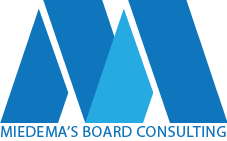As written for Imagine Canada at http://www.imaginecanada.ca/blog/executive-director-performance-reviews-5-steps
Reviewing the performance of a nonprofit executive director is a key board responsibility, yet it is often neglected or postponed while the board deals with other issues. There are many reasons why Imagine Canada’s Standards Program includes this performance review as part of its governance criteria.
First, the executive director is the only staff person that reports to the board. He or she is the main link between the board and the organization. Operational results tell only part of the story of the executive director’s performance. If the board is not directing the executive director and monitoring his or her performance, the board will not know what is happening in the organization’s culture and whether the mission and vision are being fulfilled. Second, the performance review is a key opportunity for the board to drive the impact and effectiveness of the organization. The board can set targets and the long term vision of where they want the organization to be, and then equip the executive director to get them there. Third, executive director performance appraisals play a role in succession planning; the performance review helps the board know what the executive director does and what skills and characteristics are needed in the next leader appointed in either an emergency or planned succession. Finally, the board needs to set the tone from the top. If the board expects the executive director to implement job descriptions, work plans and performance reviews for all staff, then the board should model this commitment to good staff management.
Here are five steps to conducting a performance review:
Step 1: Schedule the Meeting
This sounds obvious but it is often the biggest hurdle. We just don’t get around to it. Book the meeting and invite the people who will be part of the review. It is the board’s choice as to who conducts the review. Some boards delegate the review to the board chair, some to the executive committee and others to a special task force.
If the board is putting off a performance review because there are performance issues, it is even more critical that the meeting be scheduled. By neglecting this duty the board is exposing the organization to harm and incurring possible future legal liability if the executive director leaves (voluntarily or involuntarily) and files a wrongful or constructive dismissal suit.
Step 2: Gather Information
Gather together the job description, the previous goals and objectives statement (if available), key performance indicators and any other documents the executive director is accountable to. Decide on a cost of living increase and conduct a wage survey to determine whether a salary adjustment is necessary. If funds are tight and a salary increase is warranted, decide on other possible rewards such as extra time off or the opportunity to attend a conference or course as an investment in professional development. Then survey all board members for their feedback on performance and compensation. Have the executive director list his or her proposed goals and objectives for the coming year in categories such as operational goals, professional development needs and personal work/life balance aspirations.
Schedule an external review if necessary. External reviews involve hiring an outside party to interview stakeholders such as staff, peers, partners or major donors in order to give the board feedback on the Executive Director’s performance from an objective perspective. External reviews are generally not necessary every year but can be a helpful exercise every two to three years.
Step 3: Conduct the Meeting
There are many formats and agenda options for the performance review meeting itself. Options include going through the strategic goals, the job description, the executive director’s previous year’s goals and objectives or the external review report.
Recognition is important and extremely valuable to high performing executive directors. If there are any criticisms, keep them constructive. Look for ways to encourage improvement (where necessary) and use any negative feedback from an external review as an opportunity for improvement instead of a reason for a reprimand.
Step 4: Set the Follow-up Plan
Decide on the goals and objectives for the coming year. Agree on funding, time and the board support needed for any professional development activities the board would like the executive director to work on. The goals and objectives can be developed into a chart or dashboard to keep the board informed throughout the year and to frame the discussions with the executive director at board meetings.
Ensure the performance review process is spelled out in the board policy manual to ensure that the board makes a commitment to carry on the practice and knows the steps to take.
Step 5: Schedule the Next Meeting
Schedule follow-up meetings if needed. If there are performance issues, put a plan in place and set dates for the number of follow up meetings required to resolve the issue. Set a target date for the next year’s annual review, go back to Step 1 and repeat!
In summary, the board-executive director relationship is a key success factor in any organization. A regular schedule of performance reviews will encourage open, honest and clear communication benefiting both parties and increasing the opportunity for organizational success.







